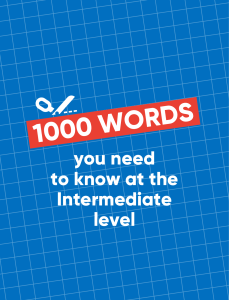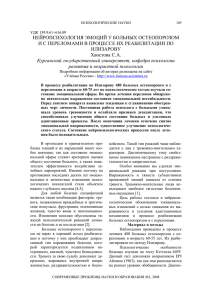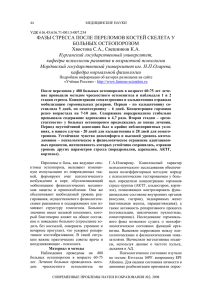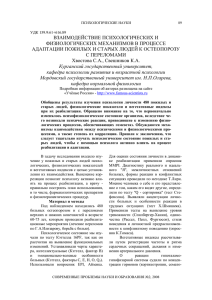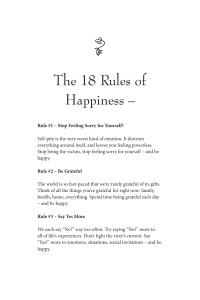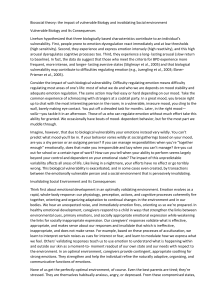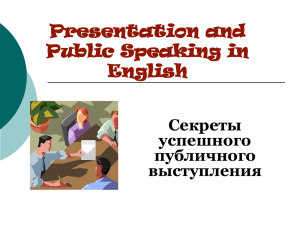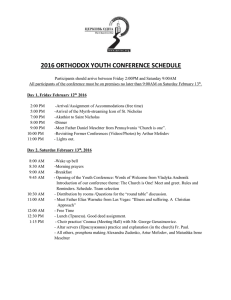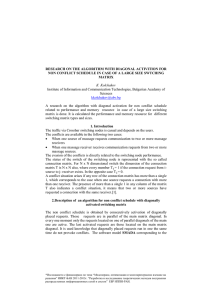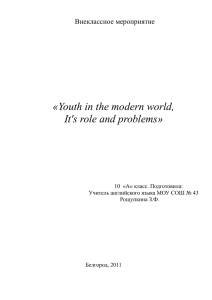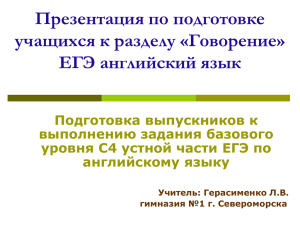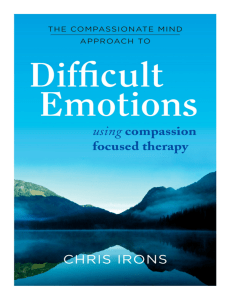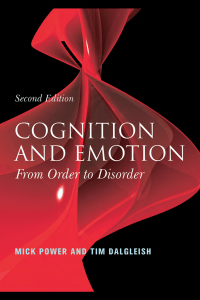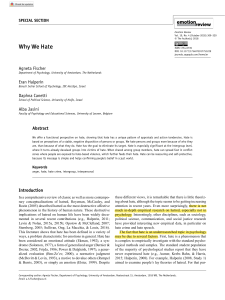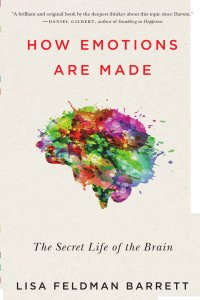Optimization of Swimming Performance Emotion- & Action-Centered Approaches ()
advertisement
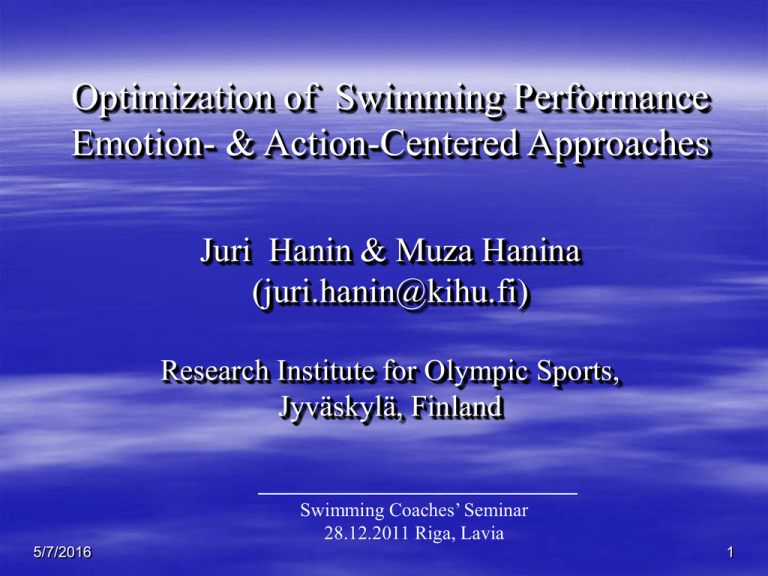
Optimization of Swimming Performance Emotion- & Action-Centered Approaches Juri Hanin & Muza Hanina (juri.hanin@kihu.fi) Research Institute for Olympic Sports, Jyväskylä, Finland Swimming Coaches’ Seminar 28.12.2011 Riga, Lavia 5/7/2016 1 Исследования и консультирование Спортсмены, тренеры, команды: 1967- 1990 - в России - 4 Oлимпиады 1991- 2011 - в Финляндии - 8 Oлимпиад Основные виды спорта: командные: хоккей, футбол, волейбол, гребля индивидуальные: л/атлетика, плавание. прыжки в воду, cтрельба, bowling, гольф, sailing, лыжи, фиг-катание, гимнастика, oриентирование, теннис, etc. Спортивная психология - тенденции в прошлом 1. Акцент на проблемах: стресс-реакции тревога мертвая точка коррекция недостатков 2. Групповые сравнения: акцент на средних, успешных и неуспешных, игнорирование внутриинд. динамики Спортивная психология сейчас 1. Акцент на позитивном: выявление инд. ресурсов (strengths) использование стресса оптимизация деятельности 2. Главный акцент на индивиде: индивидуально лучший уровень стабильность и внутри-инд. динамика * Hanin, 2000, 2003 Психологическая подготовка систематическое использование психологических процессов чтобы влиять на мысли, эмоции, мотивацию, поведение, действия, и общение спортсмена (или команды) в специфическом контексте. * Hanin, 1997 Психологическая подготовка Общая Специальная • умения и навыки • качества • черты • готовность Успех в спорте/жизни Стабильность • ситуативный успех • выполнение задачи Optimal Performance: 1. Is based on own strengths 2. Uses personal resources effectively 3. Adjustable under different & difficult conditions 4. Provides tools for personal control 5. Helps to avoid trying too much 6. Involves a skill to deal with the unexpected 7. Helps to re-focus when distracted 8. Consistent performance (PB, SB, top 5) 7 Non-optimal performance in elite sport 1. 2. 3. 4. 5. 6. 7. 8. 9. 10. High performance variability in practices Good performance in practice, not in competition Good performance in a warm-up, not in competition Best results usually in minor competitions Stress-induced instability of technique “Lost move syndrome” (LMS) (a ”break-down”) Habitual (learned) performance errors Post-injury impact on skill execution Physical shape (over-development of qualities) Over-loaded by too many changes * Hanin & Hanina, 1999-2010 8 Optimization in Sport Emotion - centered Personal meaning Optimal goal setting Right focus Optimal energy level Avoiding dysfunction Optimal state Action - centered Identify ind. optimal skill Build up a skill chain Enhance awareness Standardize skill in practice Develop competition model Optimal skill 9 Psychology in elite sport 4. Consistent excellence 3. Peak performance (winning) 2. Competing effectively (stress-free) 1. High quality practices (hard & smart) Hanin, 1994, 2002 10 Environment Emotions Consistent Excellence Personality Coping skills *Hanin, 2006 11 Myths about emotion in elite sport “Negative emotions are always bad” “Positive emotions are always good” “Thus: more positive + less negative” Positive emotions Negative emotions P & N emotions * Hanin, 1995 Well-being Ill-being Performance 12 Emotion-centered Coping To prevent overreaction to competitve stress To reinforce situational success To deal with unexpected distractions To get ”psyched up” & mobilized To calm down after unexpected success To calm down after situational failure To deal with potential problems 13 Resources-based appraisals Emotion Control ”I want” ”I can” Emotional State Task Execution Outcomes ”I must” Action Control 14 Emotion content Pleasure P+ • Pleasant • helpful • optimal • facilitating • Pleasant • harmful • dysfunctional • debilitating Success N+ * Hanin, 1992 P- Failure • Unpleasant • helpful • optimal • facilitating • Unpleasant • harmful • dysfunctional • debilitating Displeasure N15 Idiosyncratic emotion labels Poor NAthlete # 1 Athlete # 2 S uc c e s s N+ • Scared • Panicky • Discouraged • Sluggish • Aggressive • Concerned • Anxious • Intense • Anxious • Tired • Depressed • Sad • Angry • Worried • Irritated • Tense * Hanin, 1997, 2003; Hanin & Syrjä, 1995 Poor P+ • Motivated • Confident • Energetic • Excited • • • • Willing Relaxed Sure Focused P• Comfortable • Calm • Happy • Satisfied • Nice • Calm • Pleased • Content 16 Emotions in hockey (N=97) Negative Harmful: (N-) Helpful (N+) Tired Sluggish Unwilling Uncertain Downhearted Depressed Distressed Sorrowful Afraid Strained * Hanin & Lukkarila, 1999 Tense Dissatisfied Vehement Attacking Intense Angry Irritated Nervous Provoked Restless Positive Helpful (P+) Harmful (P-) Energetic Confident Charged Certain Motivated Purposeful Willing Cheerful Enthusiastic Alert Easy-going Tranquil Satisfied Overjoyed Excited Pleasant Comfortable Calm Exalted Nice 17 N - Dejection Zone Unpleasant and dysfunctional emotions ______ _________________________________________________ Tired; Sluggish; Reluctant; Doubtful; Sad; Unhappy; Upset; Distressed; Fearful; Worried ________________________________________________________ “I can’t do it” > “I don’t want to do it” > “Do I have to do it?” 18 N+ “Emergency zone” Unpleasant but functionally optimal emotions _________________________________________ Tense; Dissatisfied; Furious; Attacking; Intense; Angry; Irritated; Nervous; Annoyed; Restless _________________________________________ “I have to do it” > “I want to do it” > I “can do it” 19 P+ Challenge zone Pleasant and functionally optimal emotions __________________________________________ Energetic; Confident; Charged; Willing; Motivated; Purposeful; Certain; Cheerful; Enthusiastic; Alert. __________________________________________ “I want to do it” > “I can do it” > “I have to do it” 20 P- “Comfort, complacency” zone Pleasant and dysfunctional emotions _______________________________________ Easy-going; Tranquil; Satisfied; Joyful; Happy; Pleased; Comfortable; Calm; Content; Relaxed ________________________________________ “I have done it already” > “I was so good” > “I enjoyed doing it” 21 Emotions & performance Good performance patterns Underperformance patterns 20 20 ESP-20 ESP-20 15 10 5 10 5 0 unpleasant, harmful unpleasant, helpful N- > N+ < pleasant, helpful 0 pleasant, harmful unpleasant, harmful unpleasant, helpful N- > P+ > P- 20 pleasant, helpful N+ > pleasant, harmful P+ > P- 20 15 ESP-20 ESP-20 15 10 5 15 10 5 0 unpleasant, harmful unpleasant, helpful N- < N+ > pleasant, helpful pleasant, harmful P+ > P- 0 unpleasant, harmful N- unpleasant, helpful < N+ < pleasant, helpful pleasant, harmful P+ < P- 22 • overconfidence • switched off • satisfaction • complacency PAST • regret • disappointment • depressed • dejected • ready • excited • confident • in control PRESENT • action-oriented • emergency • fighting spirit • angry • complacency • overconfidence • trying too much • trying too little FUTURE • nervous • tense • uncertain • self-doubts 23 Basic mental / psychological skills Relaxation On-task attention focus, re-focus Visualization, imagery, mental rehearsal Becoming & staying energised Thought-stopping Self-talk, Staying positive Realistic goal-setting Emotion control Optimization of communication Problem solving Pre- & post-event de-briefing 24 The Need for Action-centered Coping Underperformance in major competitions Unexpected skill breakdown ”Lost move” syndrome Physical shape (too much, too little) Habitual performance errors under stress Change-induced problems with technique ”New ideas” from outside 25 Athletes’ typical comments: I don’t know why it happened… I was in my best ever shape… Something happened to my technique… My technique just ”vanished” Whatever I tried, it did not help… I tried too much… My focus was not clear… I was distracted by unimportnat details… I was over-arouzed… 26 Typical emotional response to problems in technique Disappointment, frustration, Self-doubts, low self-confidence Drop in motivation, helplessness Fears, panick Questioning selected program Relationships problems (coach, team) 27 The Identfication-Control-Correction (ICC)-program Motor task as a movement sequence/”chain” Key components in the ”chain” Functional links between these components Subjective perception of ”chain” components Enhancing awareness of ”chain” components Using key components to enhance self-control * Hanina & Hanin, 2002-08 28 Action-centered profiling nn. Action profile Self-description I. Action focus Internal-external, single-multiple, process-outcome II. Action components Self-generated movement sequence, a chain III. Effort dynamics Hard-easy, relaxed-tense (% max in start-release) IV. Action outcomes Qualitative (+ / -); quantitative (m, sec., points) * Hanin & Hanina, 2009 29 Striving for excellence in shooting N=15 elite Italian shooters (2f & 3m carbine & 5f & 5m pistol) Age 20-47 (M=27.9, SD=8.1) preparing for London 2012 Olympics Method: The ICC-based 4-step procedure to identify full shooting sequence & testing chain components in practice & during simulated competition. #1 Describe usual optimal sequence (chain of actions) of a single shot from start to follow-through. #2 Identify 3-4 most important ( & sensitive ) components (breathing control, gun alignment and sight, and trigger pull. #3 Self-assessments of accuracy & ”supervision” of core components with minimum conscious control under optimal conditions in practices. #4 Assessment of core components under stress & fatigue to be ”mindully accepted”. Attention is focused on individual’s core components. * Bortoli, Bertollo, Hanin & Robazza (Submitted) 30 Shooting sequence in elite pistol shooter* 1. Hand Core componenets 2. Visualisation 3. Breath 4. Grip Breath .63 Grip .61 5. Descent 6. Zoom Zoom .70 7. Follow through Outcome Outcome * Adapted from Robazza,(2011) 31 The overall results of the intervention 1. Before the intervention most shooters were not fully aware of the core components of their action (H-1) 2. Accurately identified core components were related to shooting outcomes (H-2) 3. Accurate execution of the individual core components of the shooting action contrasts the dysfunctional effects of distress (H-3) 4. These beneficial effects were not observed in shooters who did not undergo the intevention (H-4) * Bortoli, Bertollo, Hanin & Robazza (Submitted). 32 Breast-stroke chain (JH) Ote kiinni (захват) Kiihtyvä sisääntuonti (гребок с ускорением) Suoraan palautukseen (возврат вперёд) Vartalo jousi (верх тела стрелой) Sähäkkä potku (энергичный толчёк) Jalat vartalon takana (ноги сзади) Teho (интенсивность) Toistuvuus (стабильность цикла) 33 ”Turn” chain (JH) osuminen seinään (касание стенки) nopea pyöräminen (быстрый поворот) vahva ponnistus (сильный толчок) purevat potkut (энергичная рабта ног) hyvä pintautuminen (выход на поверхность) kokonaisuus (целостность) 34 Components of Optimal Swimming Vartalo (тело) Käsiveto (гребок) Siisteys ja kokonaisuus (точность и целостность) Taktiikka (тактика) * Hengitys kuulu kiinteänä osana jokaiseen viikkoon Работа по оптимизации дыхания включена постоянно, не зависимо от главной темы 35 Success => Optimal Shape + Skill Best results Maximum Shape Optimal - Effort - Focus Skill Poor results * Hanin & Hanina, 2009 36 Performance Errors a mistake, or inaccuracy, or incorrectness (in action, activity) the condition of deviating from accuracy, correctness, or some standard of a task execution (Collins English Dictionary. 3rd Ed., 1991, p. 528) Two strategies in learning motor tasks Error & trial strategy Error-free strategy * errors are ignored * errors are not discouraged, * errors are not punished, * errors are encouraged * new learning opportunities * new experiences (+ -) * errors are immediately noticed * errors are discouraged * errors are punished * errors are minimized * errors are avoided * errors are prevented Expected outcomes: Expected outcomes: + Learning to adjust, + Benefit in future situations (transfer) + Learning based on natural strengths - Errors can become consistent - Getting it right the 1st time? - No need for adjustment ? - Learning the right way? - Less problem with correction? Conventional skill correction 1. Explain what & why the athlete is doing wrong 2. Improve the athlete’s awareness of doing wrong 3. Show the right way & explain why this way is better 4. Ask the athlete to copy it 5. Provide corrective feedback and reinforcement 6. Get the athlete to practice, practice, and practice Maschette (1985): Re-teaching pattern Wrong ”Old” Correct ”New” Conventional error correction Retention and forgetting Proactive inhibition (PI) is a negative effect of a learned task on retention of a new task 1 Old PI 2 New RI Retroactive inhibition (RI) is a condition when a recently learned task impairs the retention of an older learned tasks Wrong Correct Old way / New way in error correction Learning Trial in Practice 1. Error analysis (coach + athlete) Consistent vs. random, Major - unimportant, Single-multiple Learning Trial in Practice 2. Learning Trial Session Developing awareness of own old way Developing awareness of the new way The practice of differences The practice of the new way Learning Trial in Practice 3. Summary + home work Explaining mechanisms Expected results Handling spontaneous recovery Extended intervention procedure: Error identification from best-worst performances Old Way as an erroneous movement pattern Causes & effects of the Old Way are identified New Way as an individually optimal movement pattern Learning Trial (LT) for a rapid & permanent change Post-LT standardization & stabilization of a New Way The ICC applications (2002-11): 1. 2. 3. 4. 5. 6. 7. 8. 9. 10. 11. 12. Running (100m, 400m) Jumping (high, long, pole-vault) Throwing (javelin, hammer, shot-put) Swimming (starts, breast-stroke) Diving (1m & 3m springboard) Volley-ball (ball reception) Soccer (free kick) Pistol & rifle shooting Car-racing (F-1; DBT; FPA) Sailing Bowling Free-style skiing 47 Ведущая проблематика 1. Психологическая подготовка 2. Стресс и тревога 3. Решение проблемных ситуаций 4. Оптимизация эмоциональных состояний 5. Прогнозирование деятельности 6. Анализ выступлений 7. Оптимизация деятельности 8. Коррекция ошибок 9. Межличное общение игроков и тренеров 10.Тренер как руководитель и лидер 11. Карьера игроков и тренеров 12. Клуб и сборная
